Yellow wildflowers are an abundant flower found all throughout the world. There are so many different kinds, that it’s hard to keep up with! From gold star wildflowers to tansy ragwort wildflowers, there’s a flower for everyone. So read on, and learn more about 29 of the most beautiful types of yellow wildflowers!
29. Yellow Wood Sorrel – Oxalis stricta
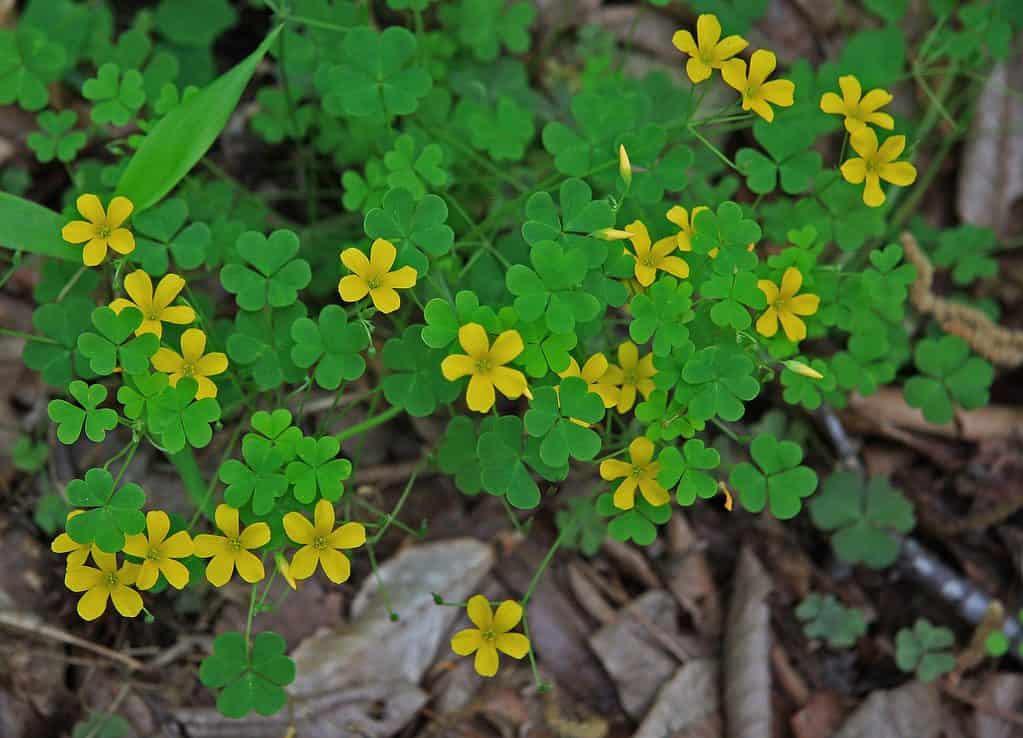
Also referred to as Lemon Clover, Yellow Wood Sorrel is an abundant North American wildflower.
Yellow Wood Sorrel is a North American native wildflower, growing in abundance all over the continent. It is identifiable by its yellow flowers and leaves growing outward from the stem that are similar to clover. They grow about 6 to 15 inches tall and bloom from Spring until Fall. They typically grow throughout the southeastern United States. Yellow Wood Sorrel is also sometimes called Toad Sorrel or Sourgrass.
28. Seedbox – Ludwigia alternifolia
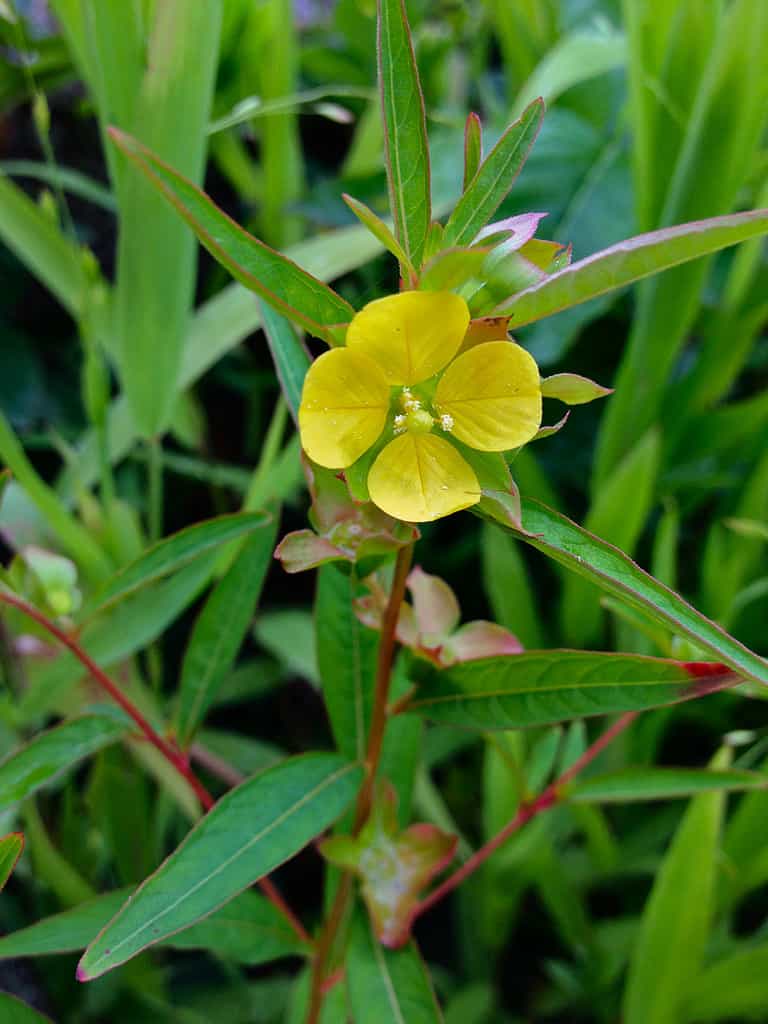
Rattlebox is another name for this wildflower.
Seedbox, also known as rattlebox, is a perennial wildflower typically found in swamps and moist areas in the eastern half of the United States but extends as far west as Colorado. They are in bloom from the Summer to the Fall and get to be anywhere from 36-48 inches in height. They are native to the United States. It has four-petal flowers and lance-shaped leaves. Seedbox wildflowers get their name from the square-shaped fruit that grows in the fall and winter. A rattling sound can be heard from the seeds on the inside of the box when shaken.
27. Yellow Marsh Marigold – Caltha palustris
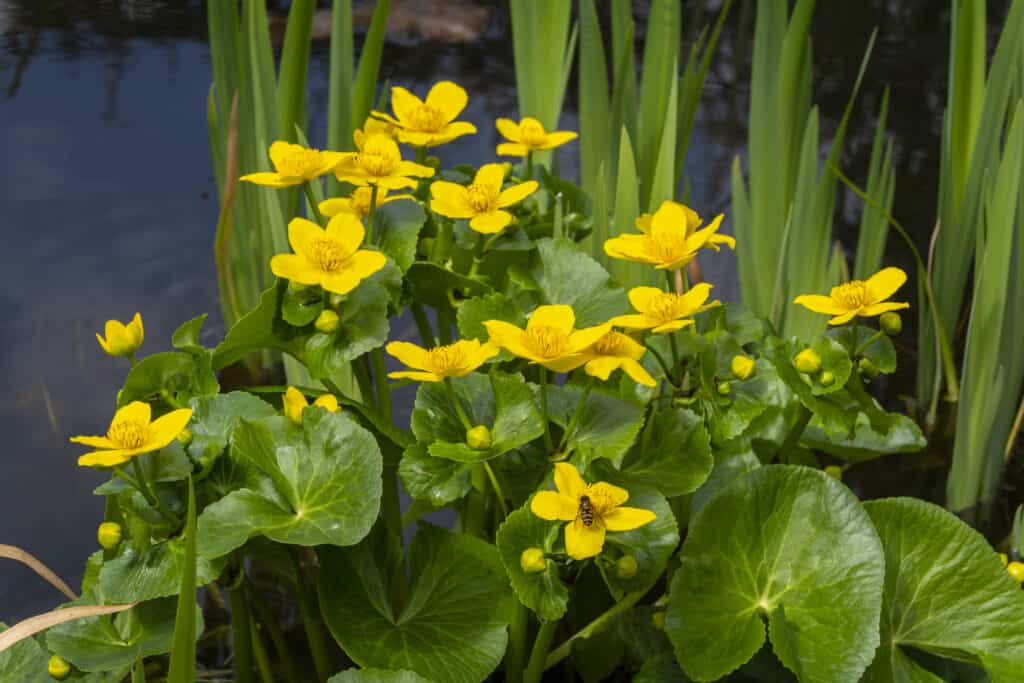
These flowers grow in wet, swampy areas.
©iStock.com/senatorek
This perennial wildflower grows in marshes, swamps, and ditches, in cold, wet weather throughout the United States. It blossoms during Spring and grows to be about 2 feet tall at its max. These flowers are among the first to bloom during Spring, and butterflies and hummingbirds are attracted to their small, bright yellow flowers.
26. Yellow Lady’s Slipper – Cypripedium parviflorum
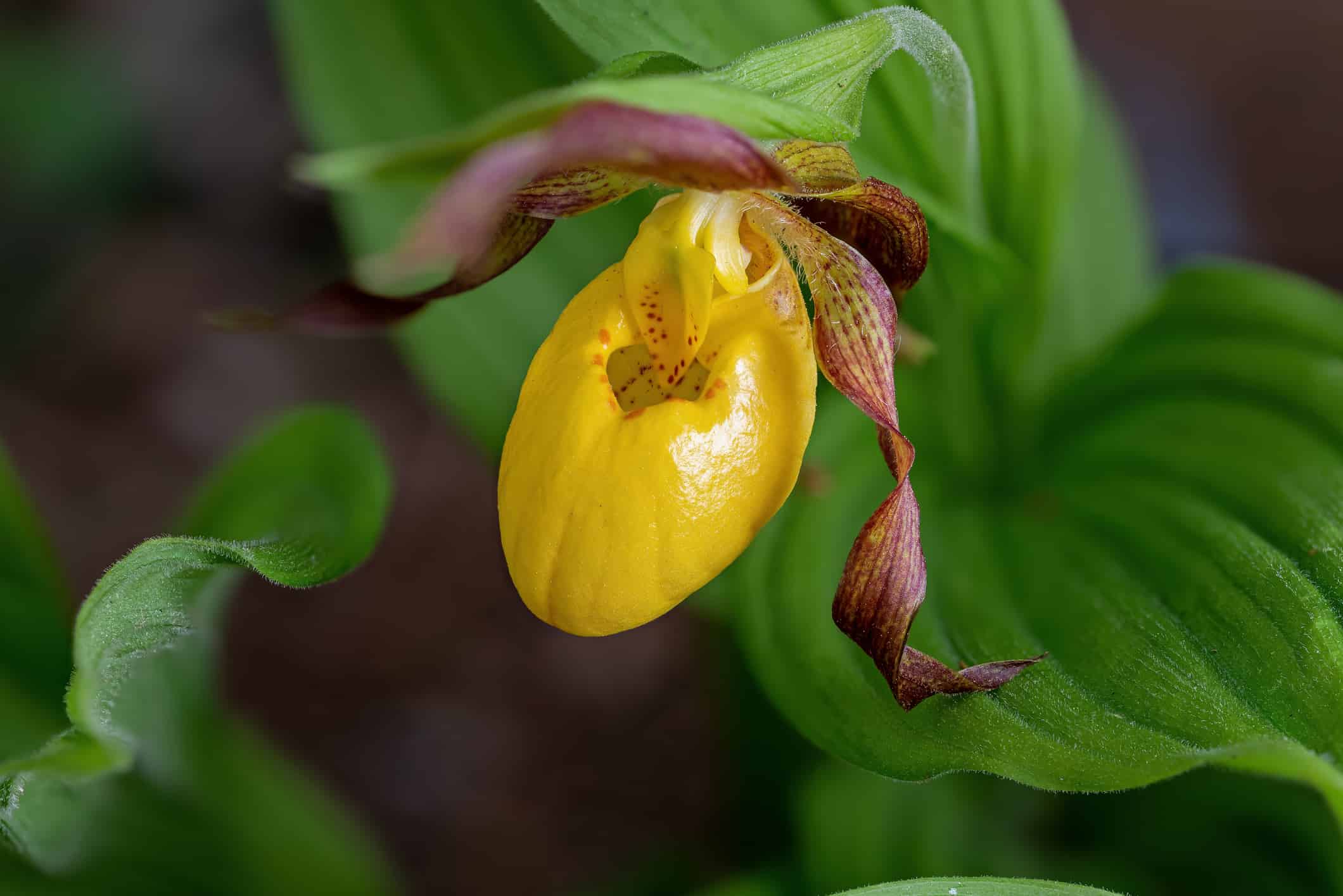
These wildflowers are very common throughout the United States.
©iStock.com/McKinneMike
Next on the list of the most beautiful types of yellow wildflowers comes the Yellow Lady’s Slipper. Requiring partial shade, this flower blossoms from spring to summer, and can get to be 30 inches in height! They are most recognized by their purple-striped petals that look a bit like shoes. These wildflowers grow in abundance throughout the United States, in forests, thickets, and on the coasts of rivers and lakes.
25. Wild Parsnip – Pastinaca sativa

Common Parsnip is another name for this invasive species of wildflower.
©iStock.com/RuudMorijn
Wild Parsnips may smell and taste like the root vegetable it shares a name with, however, this wildflower causes blisters and burns to humans. It’s an invasive species in North America that harms the plants around it as well as any animals that consume it. You can identify this dangerous wildflower by its grooved stems as well as its clusters of flat-topped flowers. They are a tall wildflower as well, reaching anywhere from 48-59 inches in height. They typically bloom during the early summer months as well. Look out for these wildflowers–don’t let their beauty trick you!
24. Yellow Trout Lily – Erythornium americanum
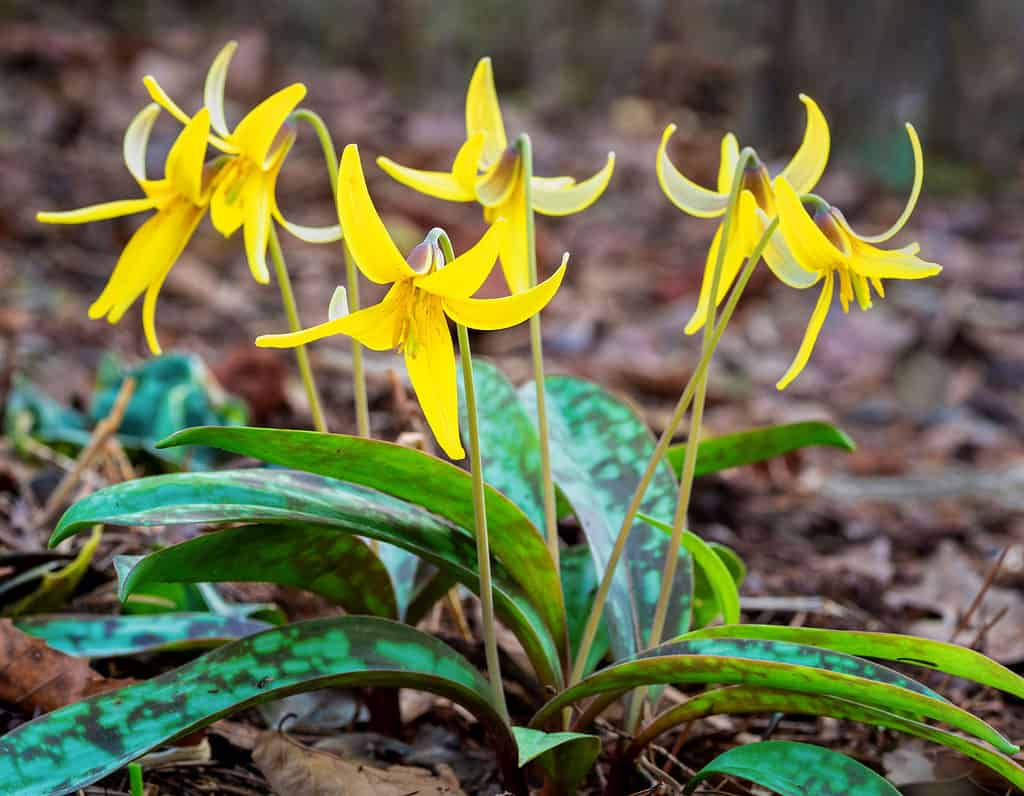
Yellow Trout Lily wildflowers are smaller than most of the other wildflowers on this list.
©Gerry Bishop/Shutterstock.com
This springtime lily is a perennial wildflower. At full maturity, it grows only 4 to 6 inches in height. They’re often found in woodlands and by streams, and they thrive under the shade of large trees. The Yellow Trout Lily attracts wild animals like no other–bees and butterflies are attracted to it because of its bright yellow blooms, while ants move the seeds and distribute them.
23. Wintercress – Barbarea vulgaris
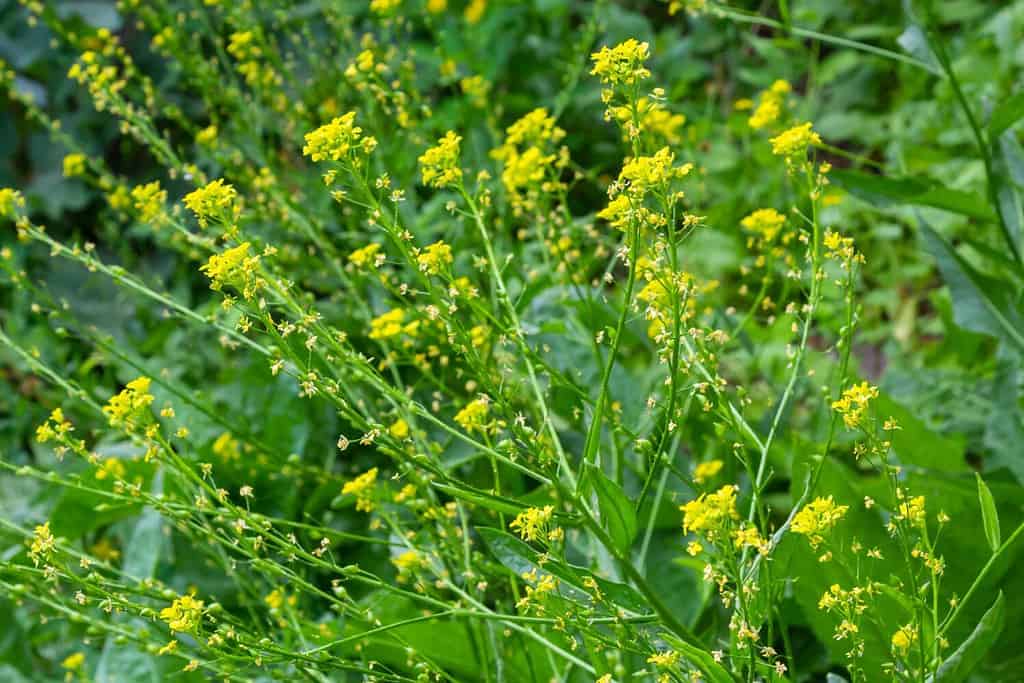
This wildflower is considered an invasive weed in the United States.
©olko1975/Shutterstock.com
Wintercress is a wildflower found in croplands and by railroads and roadsides. It’s considered a weed in the United States. Even though it’s an invasive species, this wildflower does provide nectar and pollen for bees and butterflies. It’s in full bloom from late Spring into Summer, and at full maturity can stand up to two feet tall. Additionally, it can be recognized by its tall stems and dark green leaves that are scattered about the stem.
22. Common Sunflower – Helianthus annuus
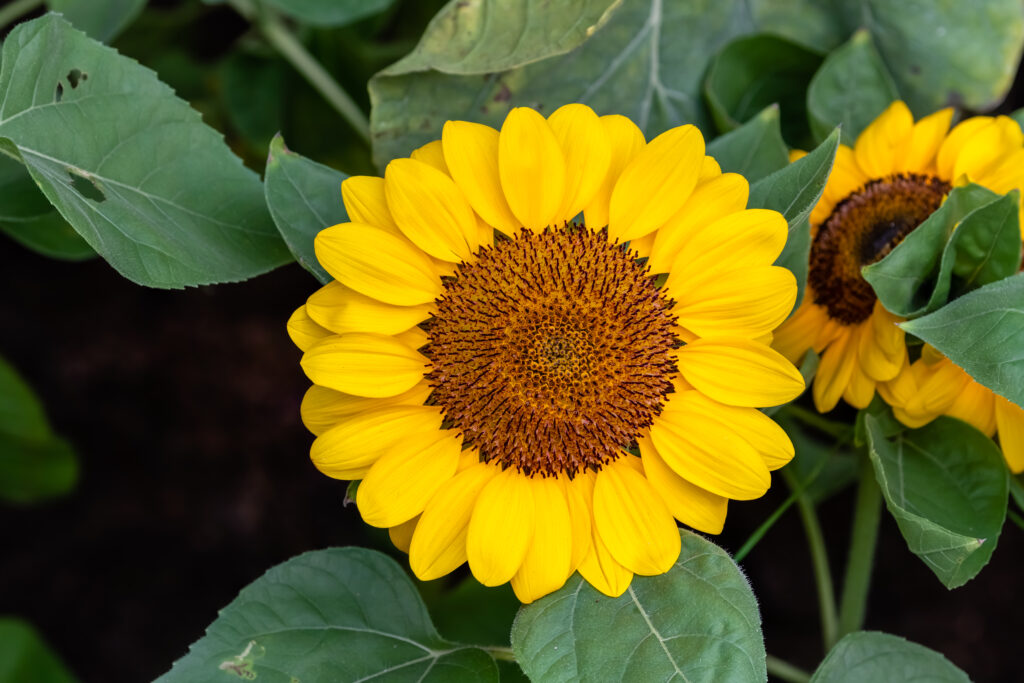
Sunflowers prefer upwards of 6-8 hours of direct sunlight daily.
©Teo Wei Keong/Shutterstock.com
Sunflowers are perhaps one of the most popular wildflowers on this list and easily one of the most recognizable. They can grow all throughout the United States, in large fields, grasslands, prairies, and forest edges. The Common Sunflower is also a staple in many people’s gardens. They can grow anywhere from 2 feet tall to 10 feet tall, with some varieties reaching even 15 feet in height! See these flowers in full bloom during the Summer. You can tell it’s a Common Sunflower by its height and its dark center surrounded by bright yellow petals.
21. Green-headed Coneflower – Rudbeckia lacinata

The bright, multi-petalled flower that tops the Green-headed Coneflower is a great way to recognize it.
©anmbph/ via Getty Images
These wildflowers are also referred to as Wild Goldenglow, Cutleaf Coneflowers, and Thimbleweeds. These are tall wildflowers, ranging from 3 feet in height to 9 feet. Green-headed Coneflowers are typically found in swamps, stream banks, and other moist, swampy areas. They are also good for attracting pollinators, like bees and butterflies. You can find them all over the United States and can see their bright yellow flowers from far away. The best time to see these giant wildflowers are when they are in full bloom during Summer and into Fall.
20. Buttercups – Ranunculus
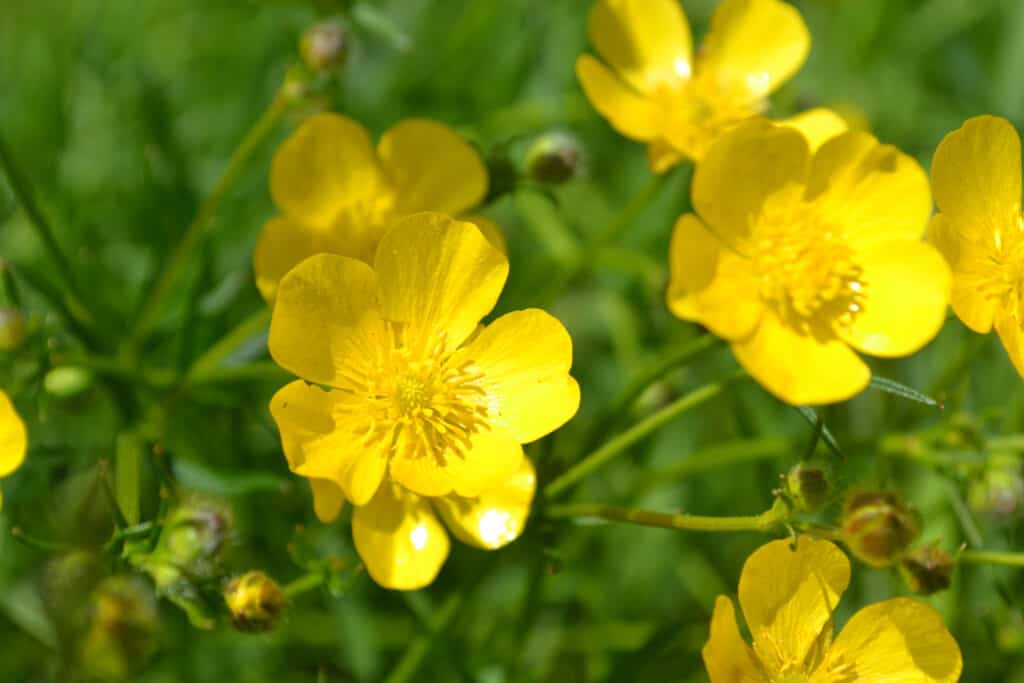
Buttercups are an iconic addition to wildflower bouquets, as they can grow in many different colors.
©Juli_Kom/Shutterstock.com
The genus Ranunculus has over 600 different kinds of buttercup species worldwide. While these flowers are iconic and most recognizable by their bright yellow flowers, they also will grow into different shades of orange, red, purple, and more. These wildflowers grow to be about 8 inches to 1.5 feet in height and are often found throughout moist habitats, where they thrive. Additionally, they can be found in fields and meadows, and are best seen during the spring and summer, when they are in full bloom. You can tell it’s a buttercup by its flower–it typically has about five curved leads facing upwards, towards the sun.
19. Birds-foot Trefoil – Lotus corniculatus
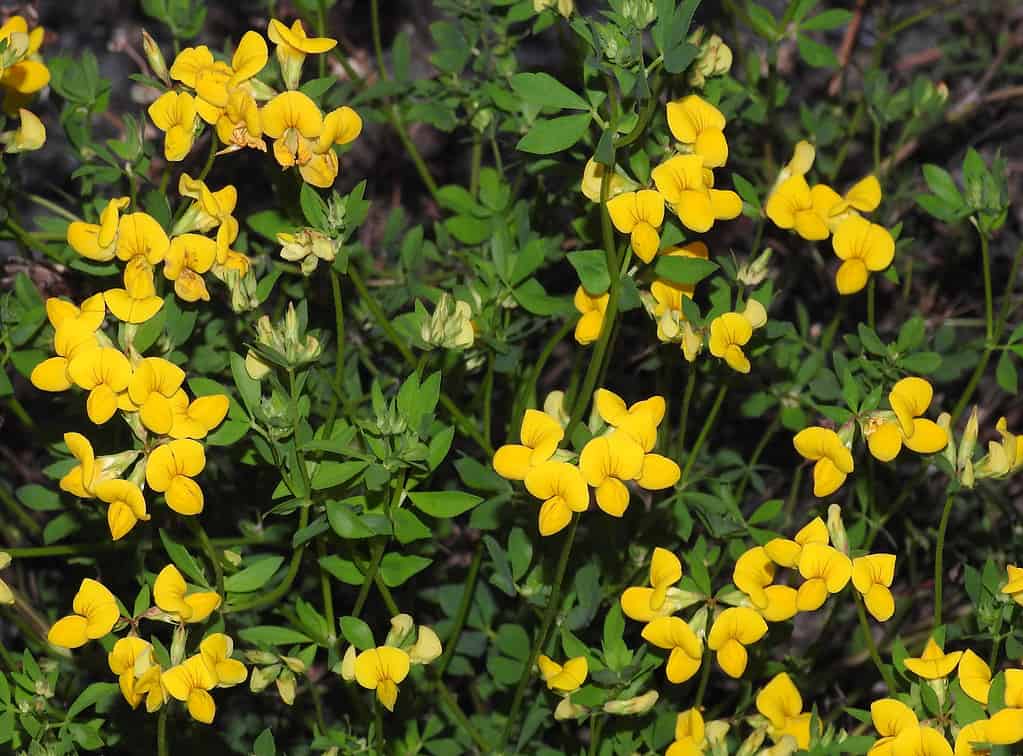
Birds-foot trefoil is an invasive species that affects the ecosystem it lives in.
This tiny wildflower is found in bloom from late spring until early summer. At full maturity, it only stands at about 2-8 inches in height, making it another small wildflower on the list. However, its height doesn’t take away from its beauty! At the end of its stalks lie yellow, orange, and red-streaked flowers. They have a unique shape about them. However, these flowers are an invasive species that typically resides in sandy soil, fields, and parks.
18. Dandelion – Taraxcum officinale

Dandelions are a popular wildflower for different pollinators.
©Wirestock/iStock via Getty Images
Dandelions are an incredibly popular wildflower found all throughout the United States. They can be found in a variety of different environments: meadows, fields, lake and river shores, and more. These wildflowers are easily recognizable by their bright yellow flowers that eventually turn into silver and white tufts. These tufts are seed heads that blow around and plant more dandelions. They grow anywhere from 6 inches to a foot in height.
17. Black-eyed Susan – Rudbeckia hirta

Black-eyed Susans are a very popular wildflower found in many gardens.
©LauraTabor/iStock via Getty Images
Another flower that is extremely popular, Black-eyed Susans are a native North American wildflower. They are found all throughout the United States, in places like woods, prairies, in large groups in fields, and just off the road. It’s name is in reference to the dark “eye” in the center of the flower, with many long petals sticking out from the middle. They will grow to be anywhere from 2 to 3 feet in height, and are best seen from the summer until the fall.
16. Hoary Puccoon – Lithospermum canescens

These wildflowers are typically found in dry, sandy places.
Next on the list, Hoary Puccoon wildflowers. These perennials grow anywhere from 6 to 18 inches in height, and are in bloom from spring until early summer. They require partial to full sun in order to fully bloom. This wildflower is identifiable by its hairy green leaves and its yellow-orange flowers that top its stem. Hoary Puccoons are typically found in sandy places, like dunes, savannas, prairies, and different roadsides.
15. Common Mullein – Verbascum thapsus

Common Mullein wildfloweres are native to Europe, Asia, and
Africa
, but are found all over.
©Cenz07/Shutterstock.com
Also known as the Flannel Plant, the Common Mullein is a wildflower found all over the United States. It is known to take over large meadows and pastures, but is only considered a naturalized species. They are tall, growing between 2 feet and 7 feet, and require full sun in order to bloom fully during the summer. It has small yellow blooms that are grouped together on a tall stem and a dense group of leaves at the base of the plant. From a distance, Common Mullein wildflowers may be mistaken for corn, as they are similar in appearance.
14. Large-flowered Bellwort – Uvularia grandiflora
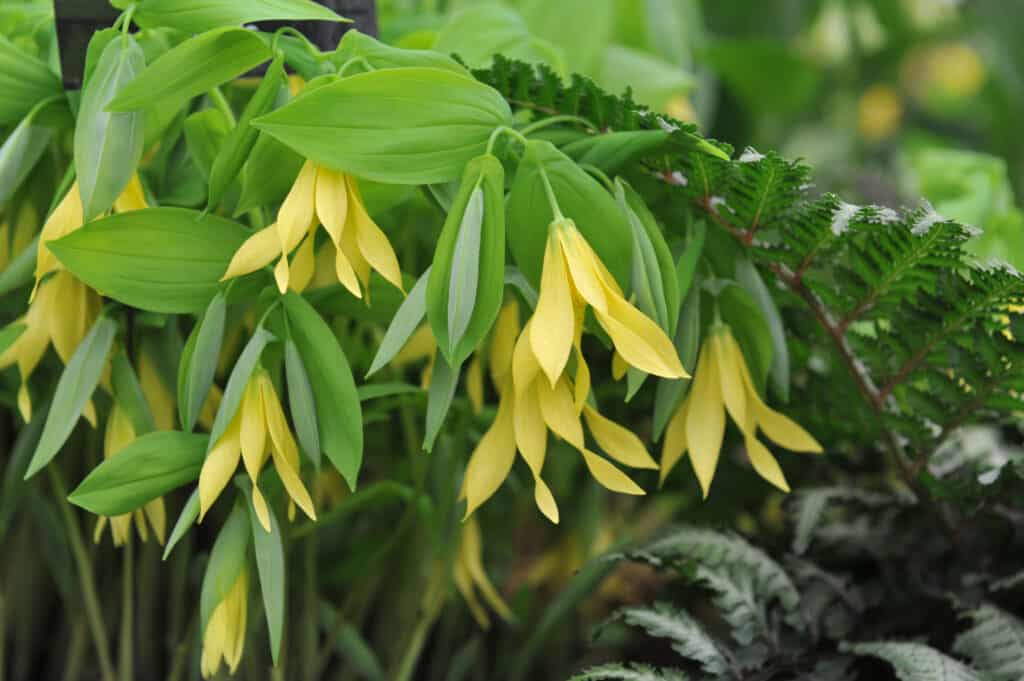
These bell-shaped wildflowers are an endangered flower, so if you come across them in the wild, leave them be!
©Sergey V Kalyakin/Shutterstock.com
This unique wildflower is in a league of its own–its flower hangs at the end of the stalk. They grow up to 2 feet in height, and the best time to see this perennialis in the spring, when its in full bloom. They typically grow in woodlands and in the mountains of the United States. Additionally, this wildflower is classified as Endangered–if you see it in the wild, best to leave it be. They are also called Merrybells, because of the way the flower hangs at the end of the stem.
13. Thin-leaved Coneflower – Rudbeckia triloba

Thin-leaved coneflowers are very cloesly related to Black-eyed Susans.
©APugach/Shutterstock.com
This wildflower looks very similar to that of the Black-eyed Susan, but is different in few ways. It grows to be 2 to 3 feet tall, and is best seen during the summer and the fall, when its in full bloom. Thin-leaved coneflowers are found in prairies and roadsides throughout the United States. It’s deep yellow leaves are recognizable, and the petals on this flower are more free, more whimsical in appearance.
12. Sneezeweed – Helenium autumnale
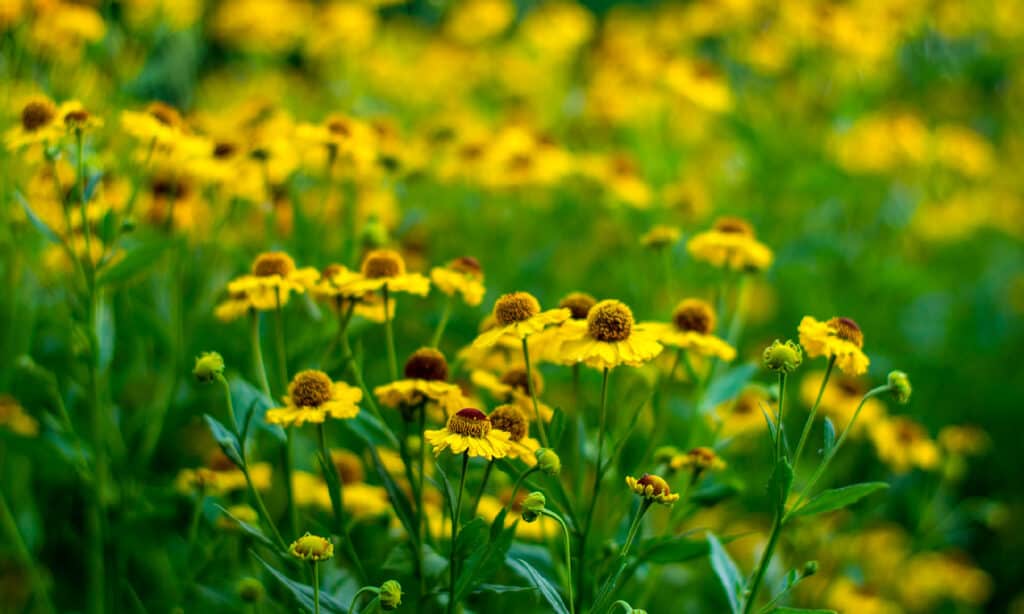
Sneezeweed is also called Bitterweed.
©iStock.com/Iva Vagnerova
Also known as a False Sunflower, these wildflowers look like sunflowers without the dark center that sunflowers are known for. Instead, they have a brighter, more orange center that multiple petals stick out of. These flowers grow anywhere from 2 feet to 5 feet, and are best seen from the summer until the fall. They grow alongside streams and ponds in addition to other moist areas throughout the United States. Even though its called Sneezeweed, it’s not a wildflower that typically causes people to have an allergic reaction. There’s an old medicinal practice that crushes and dries the leaves from Sneezeweed with the goal to remove evil spirits from the body. In the crushing and drying process, lots of sneezing occurred.
11. St. John’s Wort – Hypericum perforatum
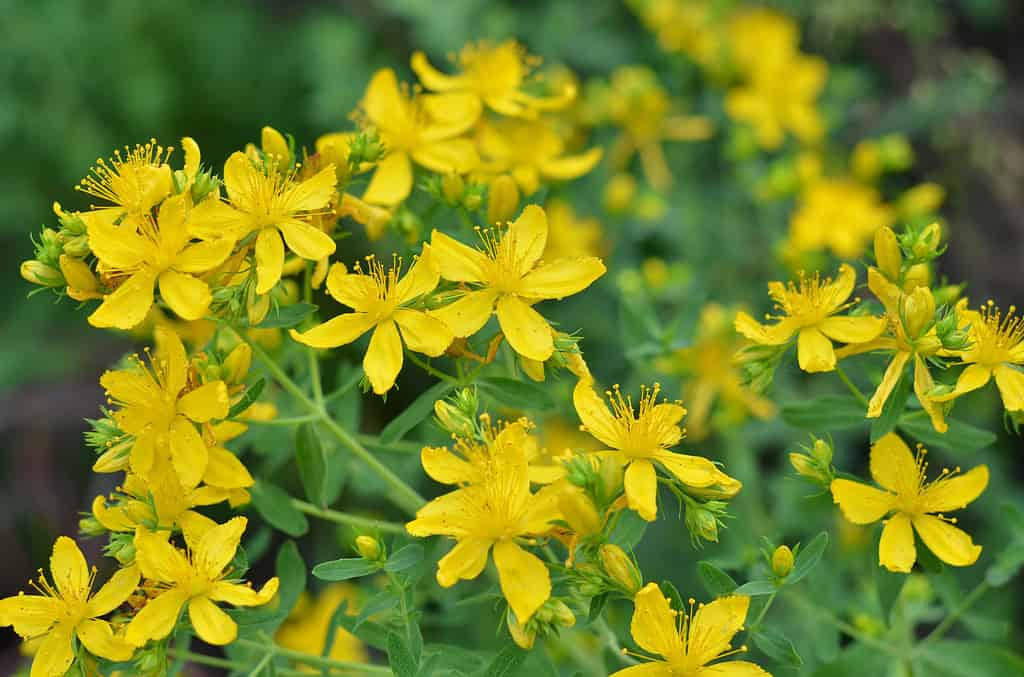
These wildflowers can be fatal for livestock and the ecosystem it invades.
©Yuliia Bilousova/iStock via Getty Images
St. John’s Wort is a very popular wildflower that blossoms during the summer. At full maturity, the wildflower grows to be 11 inches to 35 inches tall. This wildflower often grows extensively in prairies, fields, meadows, and pastures. This wildflower, however, is popular for a negative reason–it’s a famously invasive species that is dangerous to livestock like horses and sheep. You can tell it’s St. John’s Wort by it’s cluster of yellow flowers at the end of a stem, typically with five petals surrounding a space with more seeds coming out.
10. Gumweed – Grindelia squarrosa
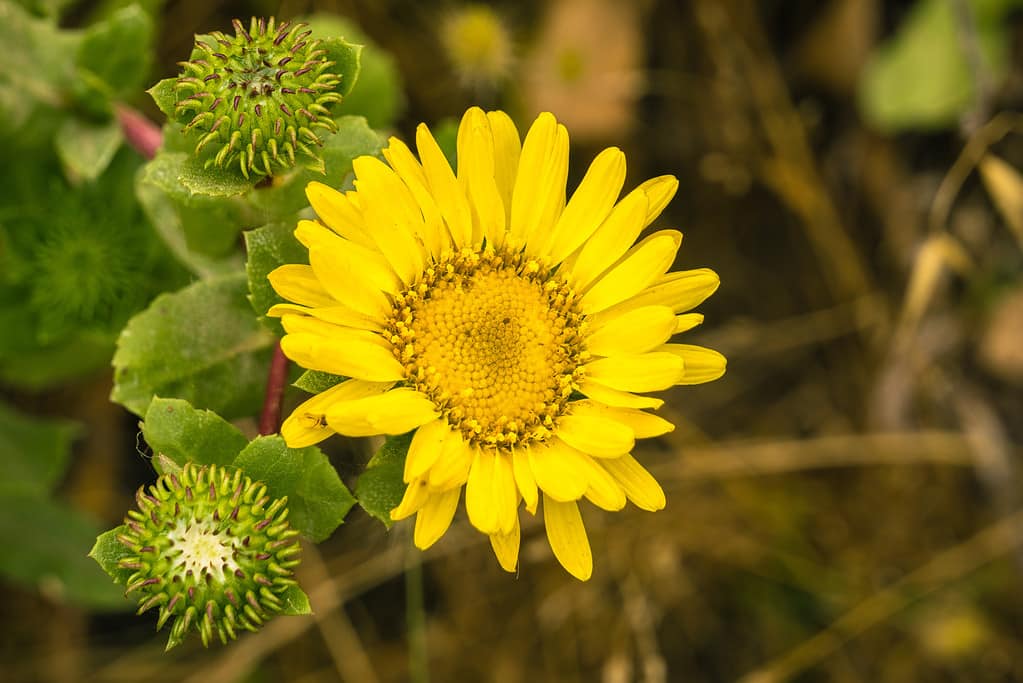
These wildflowers grow well in drier areas.
©Sundry Photography/iStock via Getty Images
Gumweed is another wildflower that looks similar to that of a sunflower. Its petals surround a yellow center that is full of seeds. Best seen during the spring until the fall, these wildflowers can grow from 12 inches to 40 inches tall. They typically grow in dry places, like prairies and croplands. It can be identified by its multi-petalled flower that adorns the long, leafy stem.
9. Perfoliate Bellwort – Uvularia perfoliata
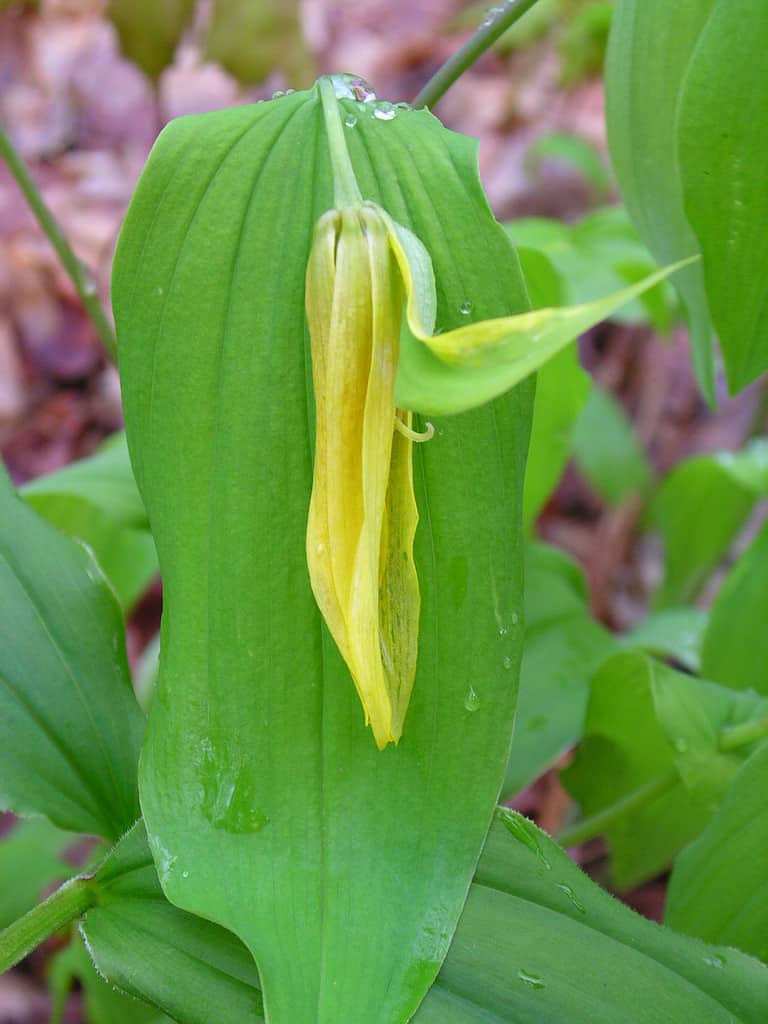
Perfoliate Bellwort has a bell-like flower that adorns the top of the stem.
Also called Mohawk Weed, this wildflower grows best in partial to full shade, and is in full bloom from the spring to the summer. It’s maximum height is anywhere from 10 to 15 inches. It grows in forests, floodplains, and woodlands. Perfoliate Bellwort is recognizable by its bell-like pale yellow flower that hangs from the end of the stem. It typically has five to six petals on its main flower, and it grows in big groups.
8. Woodland Sunflower – Helianthus divaricatus
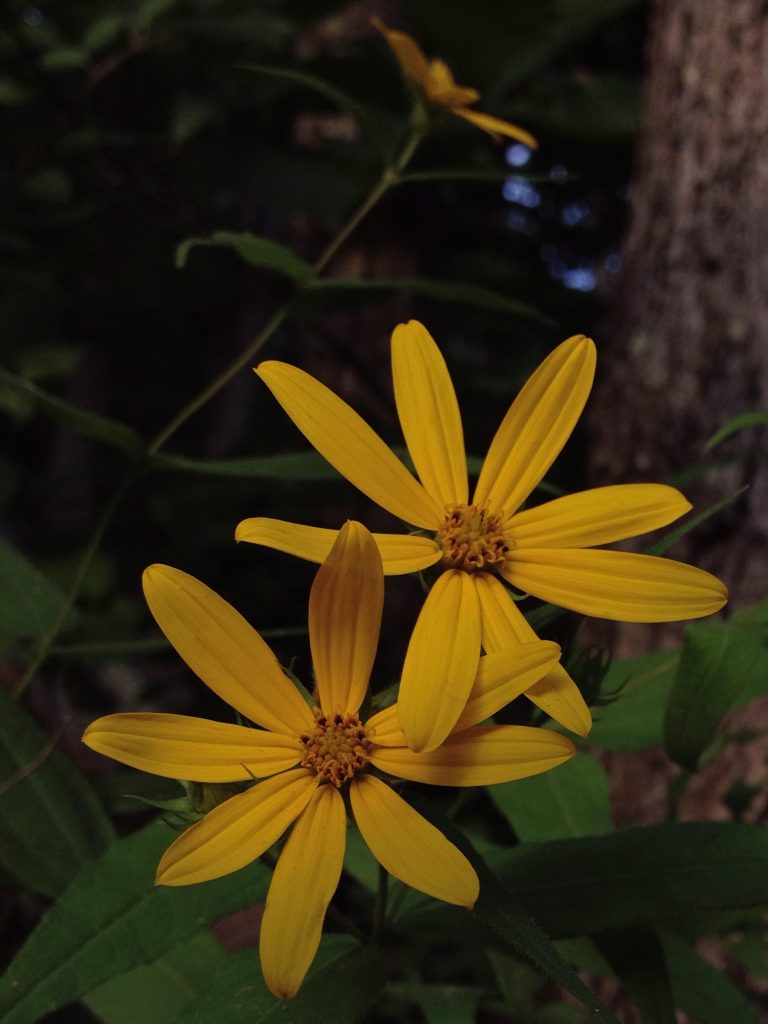
These sunflowers are similar to those of the common sunflower, but have a different center, and are a bit shorter.
Woodland Sunflower wildflowers differ from regular wildflowers because it has a smaller center. They are also not as tall as other sunflowers, on average reaching anywhere from 2 to 6 feet in height. The petals on Woodland Sunflowers are wide and bright yellow, and they grow all over–in savannas, prairies, roadsides, and woodlands, just to name a few.
7. Common Goldstar – Hypoxis hirsuta
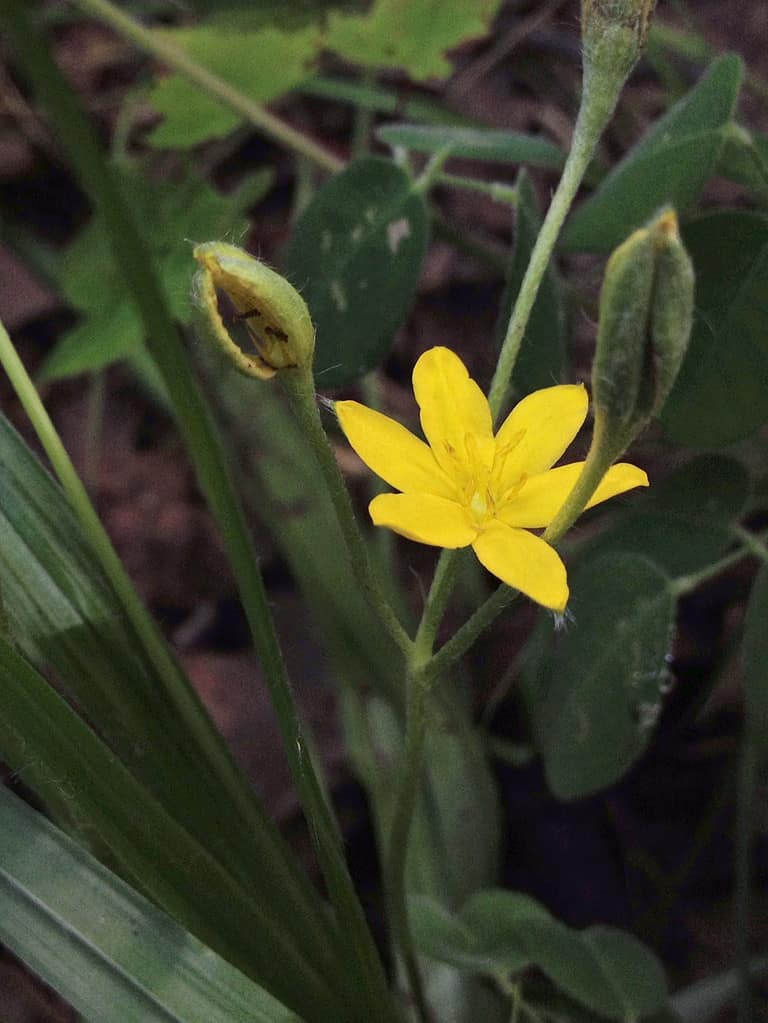
These wildflowers are often referred to as Yellow Star Grass.
The Common Goldstar wildflower is a pretty, six-petalled wildflower found natively in the United States, in woodlands, fields, meadows, and woods. These perennials grow anywhere from 4 to 18 inches and are in full bloom from spring through summer. They can be identified by their star-shaped flowersthat grow along stems with little to no leaves. It’s easily confused with common grass when its not in full bloom.
6. Spiny Sow-thistle – Sonchus asper
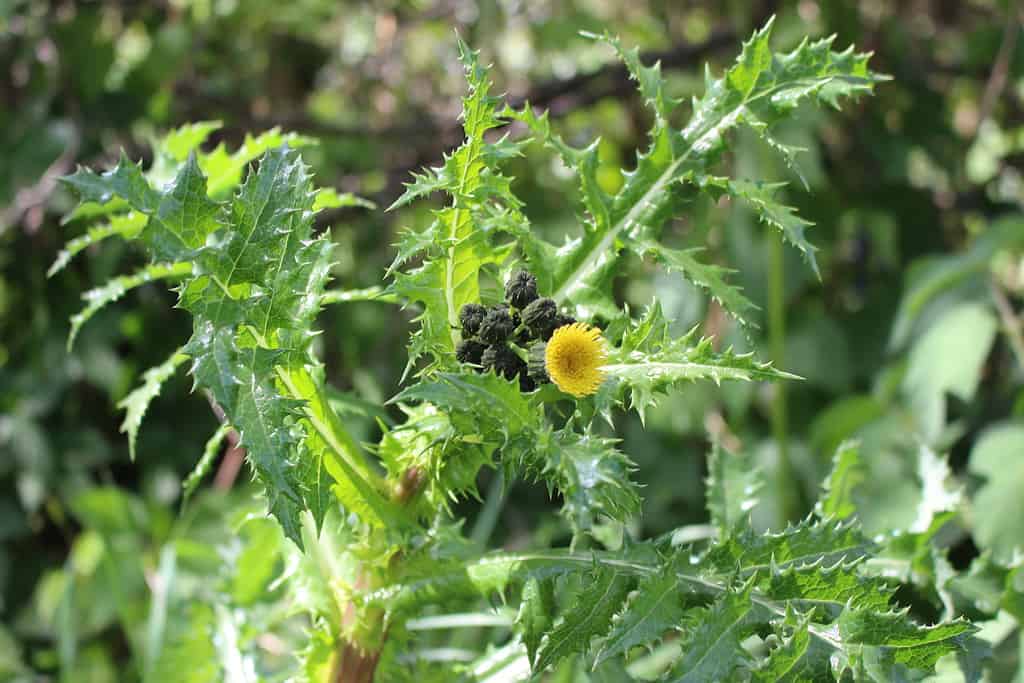
Spiny Sow-thistle is an incredibly dangerous invasive species.
This invasive yellow wildflower species is dangerous to gardens, because it can bring with it diseases and pests that are not good for your plants. You can identify it by its spiky leaves, dandelion-like yellow flowers, and its height. It typically grows between 1 to 3.5 feet tall. It’s in bloom from spring through summer. It typically grows in grasslands and roadsides, as well as construction sites and waste areas.
5. Wood Betony – Pedicularis canadensis

This wildflower is found all throughout the dry places of the United States.
Wood Betony is a unique-looking wildflower that is also called Canadian Lousewort. Additionally, it grows from 4 to 16 inches in the late spring to early summer. It’s identifiable by its yellow and greenish flowers that adorn the head of a spiky stem. It grows typically in dry places, like prairies, savannas, and woodlands.
4. Bearded Beggartick – Bidens aristosa
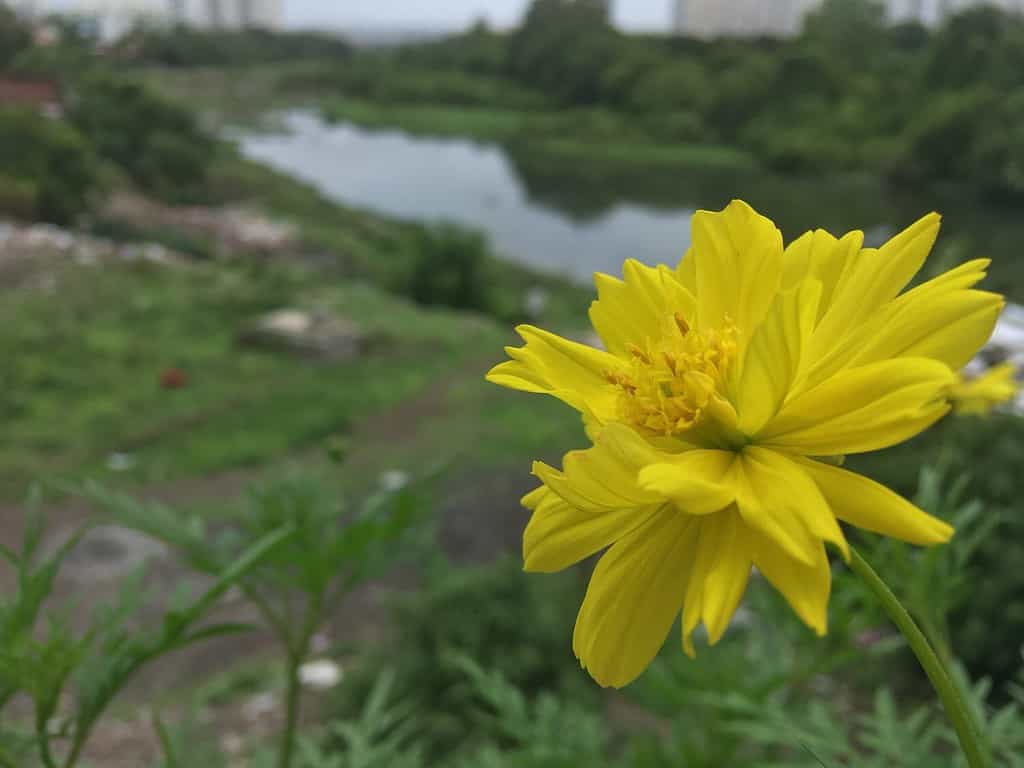
These wildflowers are also called Tickseeds.
©Dinesh Dilip Panchal/Shutterstock.com
Bearded Beggartick wildflowers blossom in the fall, growing in wet meadows and other damp places. They grow from 36 to 72 inches in height and require partial to full sun in order to fully blossom. It’s named for the prickly fruits that grow from the plant itself. Its flower typically has about eight petals sticking out from the center.
3. Sulphur Cinquefoil – Potentilla recta
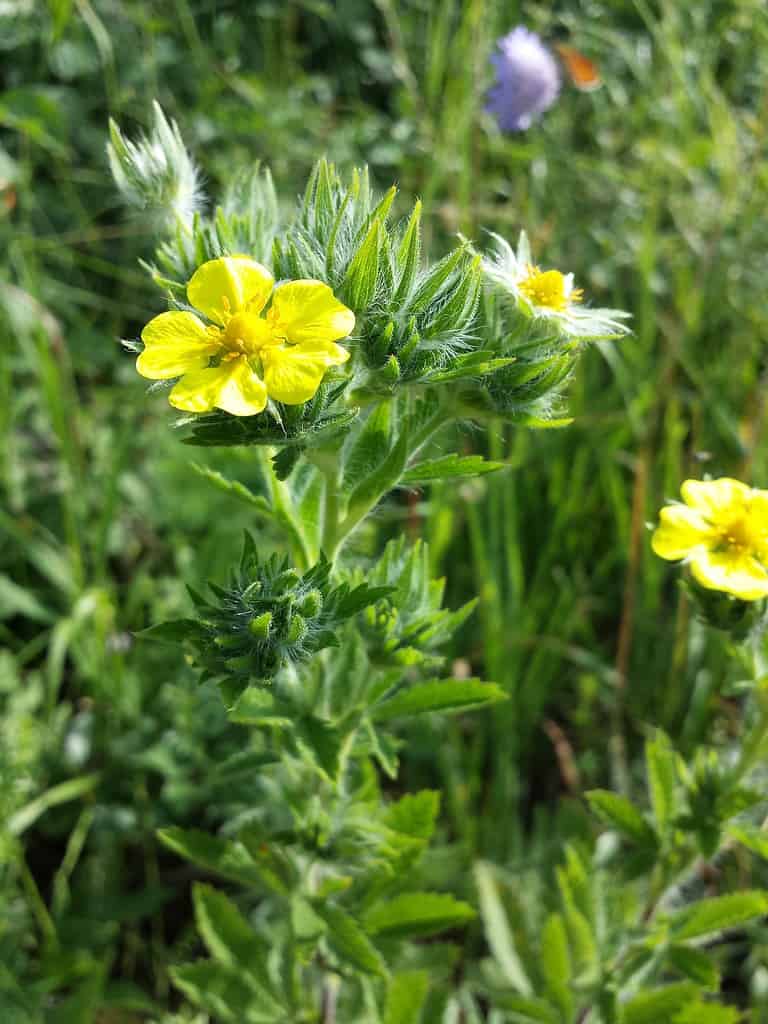
Sulphyr Cinquefoil wildflowers have small, heart-shaped flowers growing at the top of a spiky stem.
These wildflowers have heart-shaped petals that come out of the center. They are a pale yellow color with about five petals. Sulphur Cinquefoil wildflowers grow anywhere from 12 to 20 inches in height, from late spring to early summer. It’s considered an invasive species, as it threatens native plants and even entire ecosystems. It grows in fields and along shorelines all throughout the United States. Avoid these wildflowers!
2. Carolina Jessamine – Gelsemium sempervirens
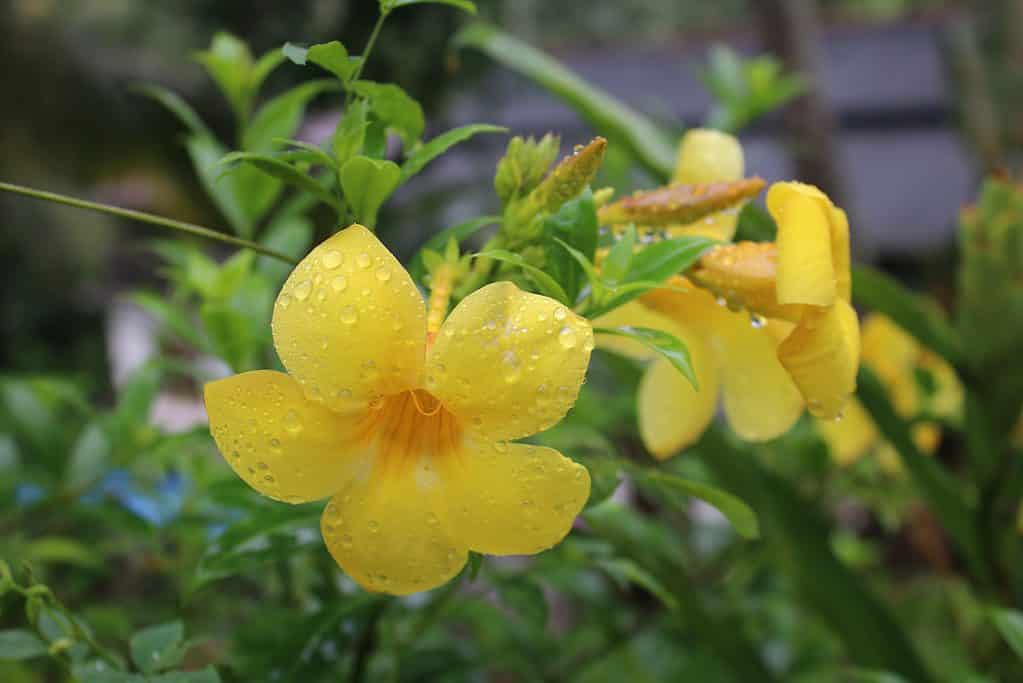
These wildflowers are a great addition to any garden, as they attract many different pollinators.
©Low seen/Shutterstock.com
Carolina Jessamine is a perennial wildflower that grows upwards of 8 to 12 feet tall! It is in bloom all the way from spring until winter, as it grows alongside roads and in the woods and thickets. Its flowers have a unique, trumpet-like shape that set it aside from other wildflowers. Many flowers grow along its long stems and vines. It is a great, attractive wildflower for a variety of pollinators.
1. Goldenrod – Solidago
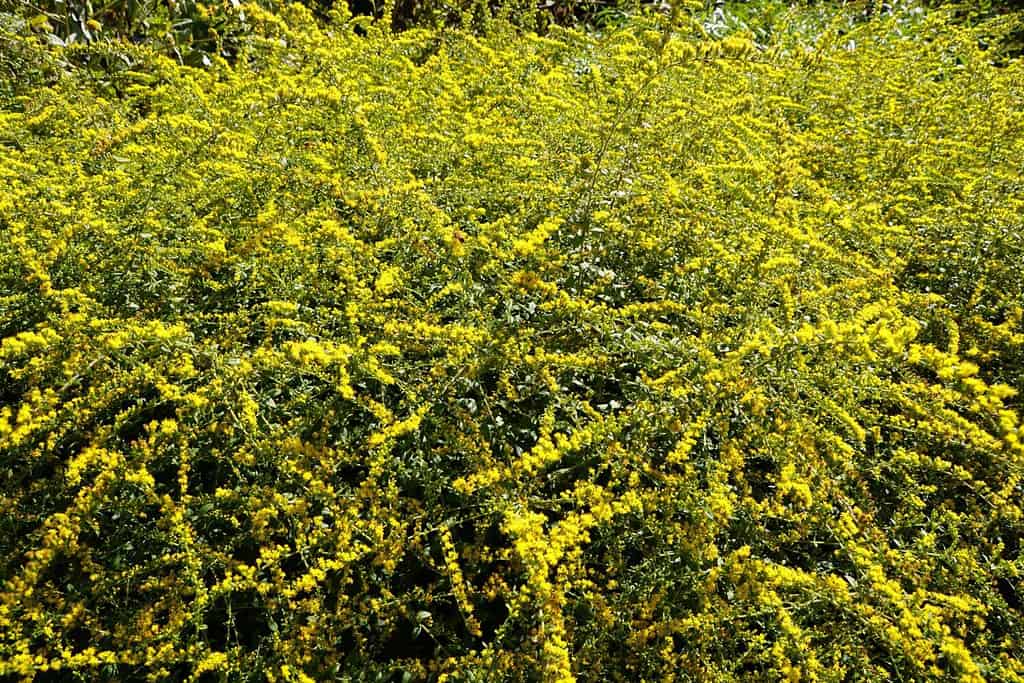
Goldenrods are sometimes called “fireworks”.
©Khairil Azhar Junos/Shutterstock.com
Finally, the last wildflower on this list–the Goldenrod! This iconic wildflower grows to be 36 to 90 inches in height and is in full bloom from late summer into fall. They have a bright, vibrant color that is unique in appearance. These wildflowers grow in big clusters throughout the United States. However, it can grow aggressively in gardens, but it can be easily avoided by planting in it pots and pruning it. Fun fact about Goldenrod: there are 120 native species of the wildflower found throughout North America!
Thank you for reading! Have some feedback for us? Contact the AZ Animals editorial team.








